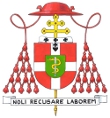Reaction on behalf of the Dutch Bishop’s Conference on the supreme court’s judgement in a case euthanasia in a patient with advanced dementia
In 2016, a physician of a nursing home performed euthanasia in a woman who had a written euthanasia declaration, firmed four years before. This itself does raise the question of whether such a written declaration, firmed years ago, still expresses the actual will of the patient. The legislator said in the Law on euthanasia (2002) that a written euthanasia declaration replaces an orally expressed request for euthanasia. In her declaration the woman said that she wanted euthanasia, when she would have been admitted to a nursing home one day, but something in this declaration remained unclear: she determined that the euthanasia should take place at a moment that she thought she would be ready for it. But after having been admitted to a nursing home she was not able to indicate whether she desired euthanasia or not. Notwithstanding this lack of clarity, the physician decided in consultation with the family and two physicians, specialized in consulting in euthanasia cases, to perform the euthanasia. The physician and the two physicians consulted all considered the suffering of the woman as without prospect and unbearable. When the physician of the nursing home tried to introduce an infusion in order to administer the means for the euthanasia, the woman withdrew her arm. Was this a sign of resistance against the euthanasia? Anyhow, the physician administered a sedative means in the woman’s coffee, after which it was possible to introduce an infusion and the euthanasia was performed.
The college of attorneys general, desiring to have more clarity in the application of the Law on euthanasia in persons who suffer from dementia, started legal proceedings against the physician of the nursing home. On April 22, 2020, the Supreme Court acquitted the physician from the charge that she would have been inaccurate in applying the Law on euthanasia. The Supreme Court followed that testimony of an anesthesiologist, that the woman’s withdrawing movement at the moment that the physician tried to introduce the infusion, was no sign of resistance against the euthanasia, but a reflex movement. Administering a sedative to the patient before the euthanasia would be acceptable according to the Supreme Court, in case one can foresee unpredictable of irrational behavior, which could complicate the euthanasia. The Supreme Court judged that the physician of the nursing home had complied with the due care criterion of the Law on euthanasia that the patient suffered without prospect and unbearably. With regard to the lack of clarity in the written euthanasia declaration the Supreme Court judged that the physician does has a certain room in interpreting the declaration. The Court thought that the physician was right in concluding on the basis of the declaration that the woman in question desired euthanasia under the given circumstances after all, though she could not herself indicate the moment of the euthanasia anymore because of advanced dementia.
Does the legal proceedings against the physician of the nursing home lead to the clarity, desired by the college of attorneys general? Physicians of nursing homes think that that is not the case. Instead of laying down criteria for interpreting the written euthanasia declarations of patients with advanced dementia, the Supreme Court leaves this to the judgement of the physicians involved, by which their uncertainty only grows. How big is the possibility that their interpretation of the written euthanasia declaration will be approved by a court, when legal proceedings are started against them, in case they perform euthanasia in patients with advanced euthanasia on the basis of written euthanasia declarations?
Most probably due to the legal proceedings against the physician of the nursing home, the number of cases of euthanasia and medically-assisted suicide, reported to the Regional Euthanasia Review Committees, which had risen to 6.585 in 2017, dropped in 2018 to 6.126. This is a decrease of 7%. Who considers human life as an intrinsic and therefore universal value and is convinced that it may not be terminated by euthanasia, medically assisted suicide and termination of life without request, would prefer that these actions never take place. However, a drop of 7% could be seen as a relative contribution to the common well-being, the basic principle of Catholic social ethics, of which the legal defense of the right to life is one of the fundamental conditions. Nevertheless, in 2019 the number of cases of euthanasia and medically-assisted suicide reported to the Regional Euthanasia Review Committees again rose to 2.655 (a growth of 13%). One may fear that the Supreme Court’s judgement, though making physicians perhaps more uncertain in performing euthanasia in patients with advanced dementia, will not lead in general to a decrease of the number of cases of euthanasia and medically-assisted suicide.
Utrecht, April 23, 2020
+ Willem Jacobus Cardinal Eijk
Referent for medical-ethical questions on behalf of the Dutch Bishops’ Conference



